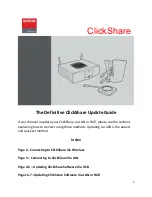
13
How to Find the Visible Planets
Officially, there are eight planets and at least three dwarf planets in our solar system.
Four of the planets can be seen without the aid of a telescope or binoculars: Venus,
Mars, Jupiter, and Saturn. (Mercury stays close to the sun, so it is very difficult to see.
Ceres is too small and Uranus and Neptune, Pluto and Eris are too far away to see
without a high-powered telescope.) As four visible planets move in the sky throughout
the year, each appears to pass through certain constellations (the twelve zodiac
constellations plus four others) at any given time. This makes it easy to find them.
The planet position tables on the back page show you where to locate the visible
planets. Look at how much a planet changes position and compare that to the planet’s
distance from the sun. Notice that the planets farthest from the sun change position
more slowly than the planets closer to the sun. Jupiter spends about a year drifting
through a zodiac constellation, while Saturn takes two years. Meanwhile, Mars and
Venus go speeding through the zodiac constellations.
You can also locate planet positions using the Stellarium software, using the Object
Search function.
Stellarium Astronomy Software
The included Stellarium Astronomy computer software lets you explore the cosmos in
great detail. You can view the night sky for any time—past, present or future—and
from any point on Earth. You can see the constellations and their names and you can
locate the positions of stars, nebulas, planets, and their moons.
Insert the Stellarium disk into your computer’s CD player and follow the set-up
instructions on the screen. The software is compatible with either PC or Mac. System
requirements: Windows XP or Mac OS X with at least 500 MHz processor, 128 MB RAM
and 500 MB of hard disk space . Minimum recommended monitor resolutions is 1024 x
768 pixels. (Note: Software is not currently compatible with Windows Vista or Macs
using Intel Processors.)
Learn More About Astronomy
If you want to learn more about the exciting subject of astronomy, check out your
school’s library, your local public library, a book store, or the Internet. Astronomers are
constantly making new discoveries of the universe.
































